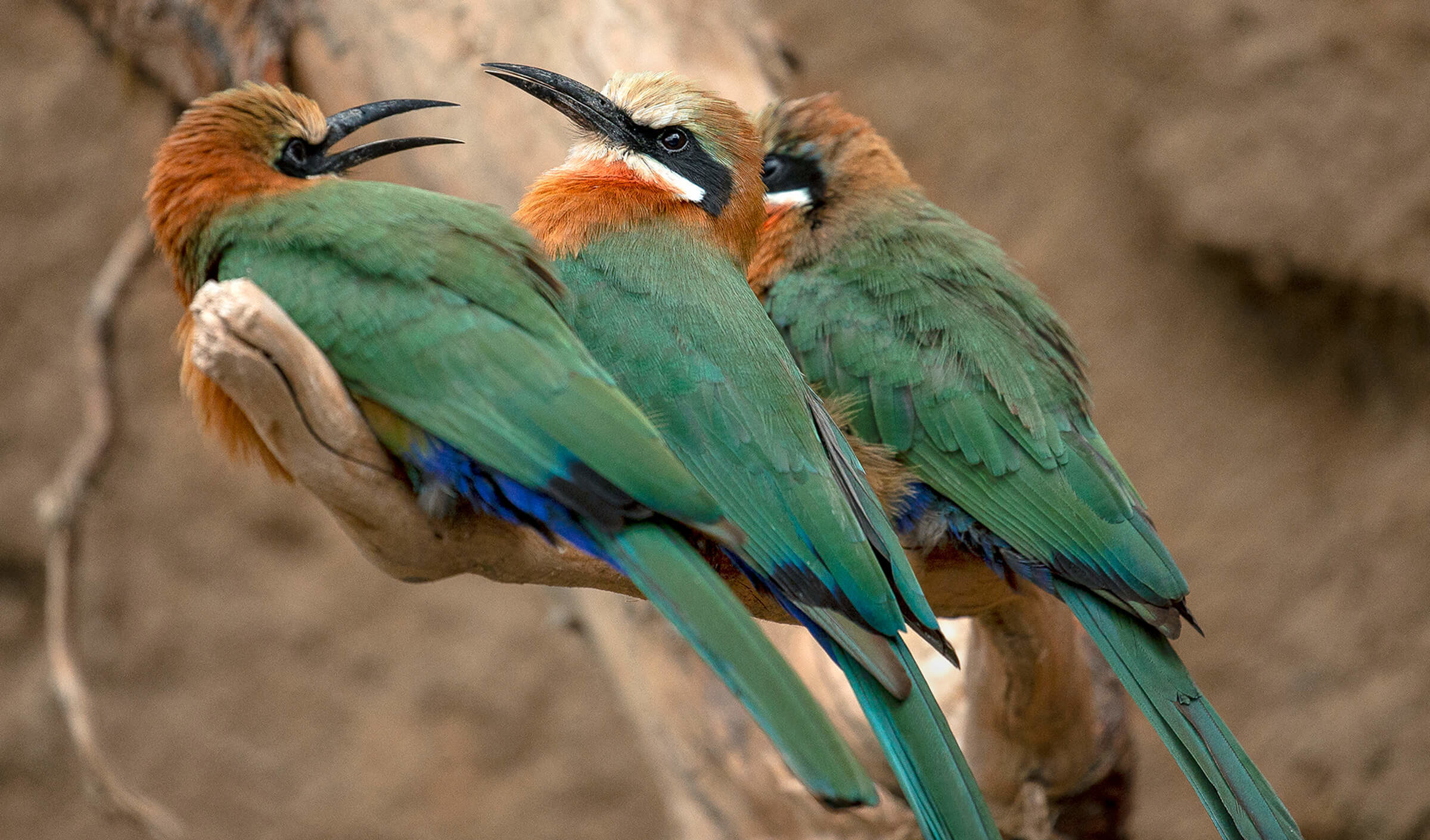BY Donna Parham
Photography by Ken Bohn
The top viewing platform in the Conrad Prebys Africa Rocks aviary not only gives visitors a sweeping vista of the habitat, it also puts them directly in front of a cliff riddled with bee-eater tunnels. But in the aviary’s initial design, those holes were meant only to lend authenticity to the look of the exhibit. In Africa, white-fronted bee-eaters Merops bullockoides lay eggs and raise their chicks inside three- to six-foot-long tunnels that they dig into steep cliff banks, and the shallow holes were intended to imitate the look of such an area.
Real bee-eaters were not part of the plan—at first. Because they are cold-sensitive, the vast aviary seemed like a risky place for this African species, which had only been displayed in smaller aviaries. “Even though there are plenty of heaters tucked away in various areas, you can’t count on birds finding the heaters in an aviary this large,” said Dave Rimlinger, curator of birds at the Zoo. But studying the exhibit plan gave him an idea. “White-fronted bee-eaters not only nest in their tunnels, they roost [sleep] in them,” he said. “If we were able to give them a way to dig real tunnels, the birds would instinctively roost there, and they would stay warm.”
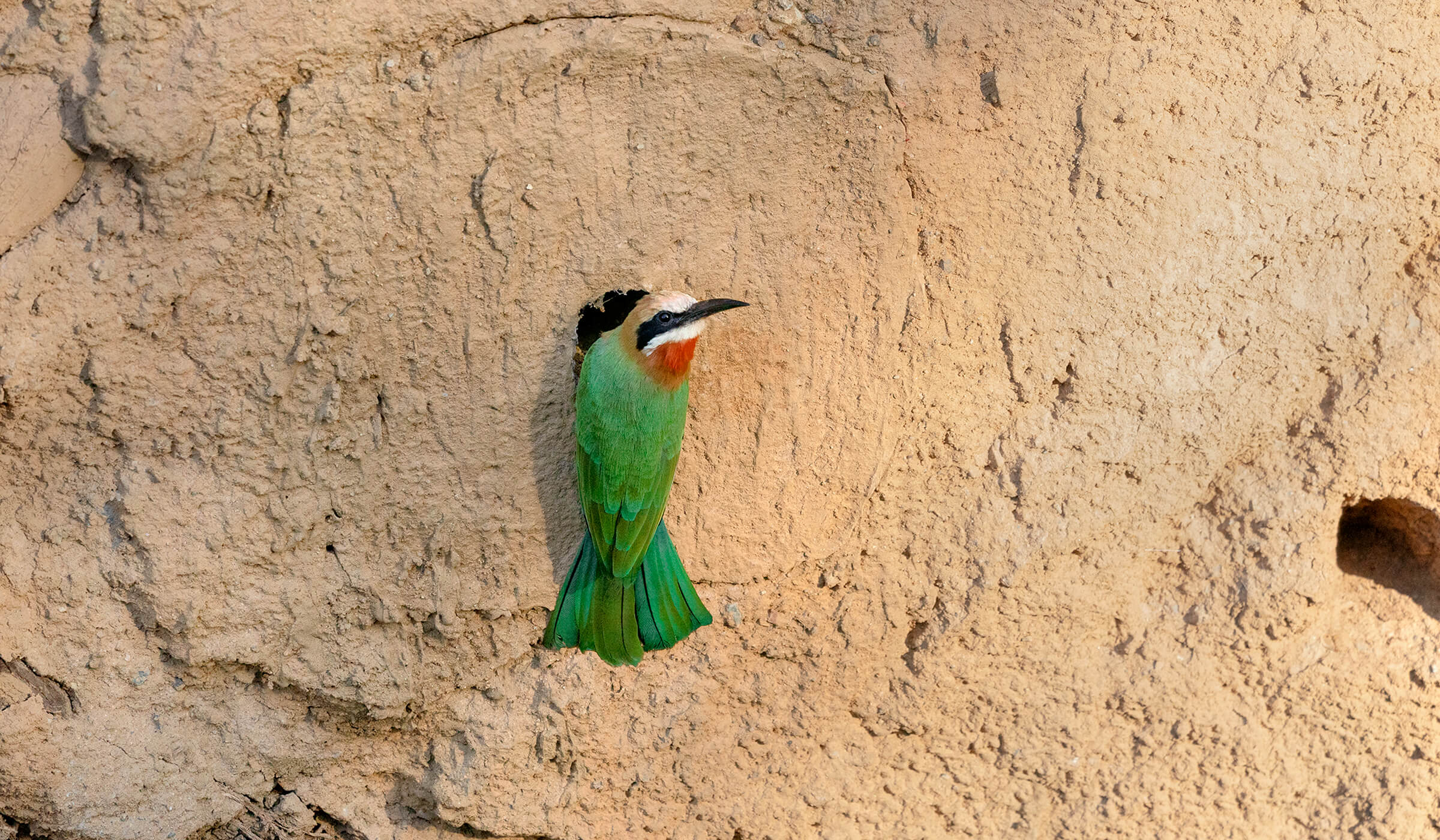
A WILL—AND A WAY
The only problem was the thick, concrete retaining wall inside the faux cliff. Not easily deterred, the design team worked on a solution. Dave gives much of the credit to animal care manager Ed Lewins, the Zoo’s Africa Rocks project coordinator, for coming up with a design that works for the bee-eaters and looks like an authentic scene right out of Africa. Contractors installed 10 permanent, large PVC pipes as they poured the concrete. A second set of tubes, which would slide nicely inside the PVC pipes, was firmly packed with dirt. Leaving a bird-sized opening in the center, the end was capped when contractors completed the exhibit detail work. Bee-eaters would be able to dig through the cylinder of dirt and carve real tunnels.
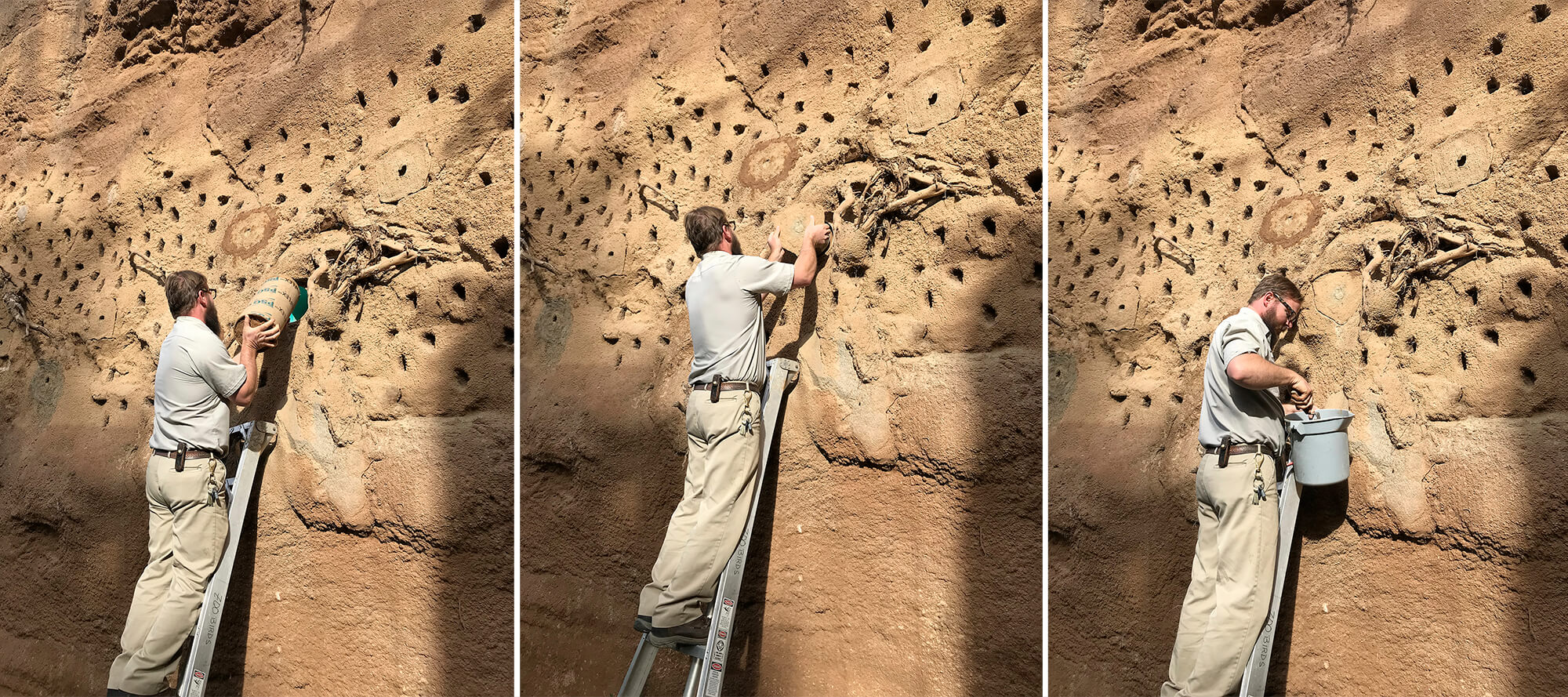
PRE-FAB HOUSING
Lead keeper Brian Rice slides a dirt-packed tube into a PVC pipe placeholder, creating a nest box for a bee-eater family. Ten of the small holes in the wall of “mud” (actually concrete) invite bee-eaters to dig deeper. Another bank of nest boxes lies underneath the top viewing platform.
Another bank of nest boxes, with a more traditional design and a successful track record—the Safari Park has the most successful white-fronted bee-eater flock in the country—was tucked back under the top viewing platform. For the first month after the bee-eaters went in, “the birds didn’t go near the tunnels or the older nest boxes,” said Dave. But as the weather began to cool in September, keepers noticed activity at the tunnels. Soon, the bee-eaters were “digging like crazy,” said Dave, making the aviary “the most realistic bee-eater exhibit in the world.”
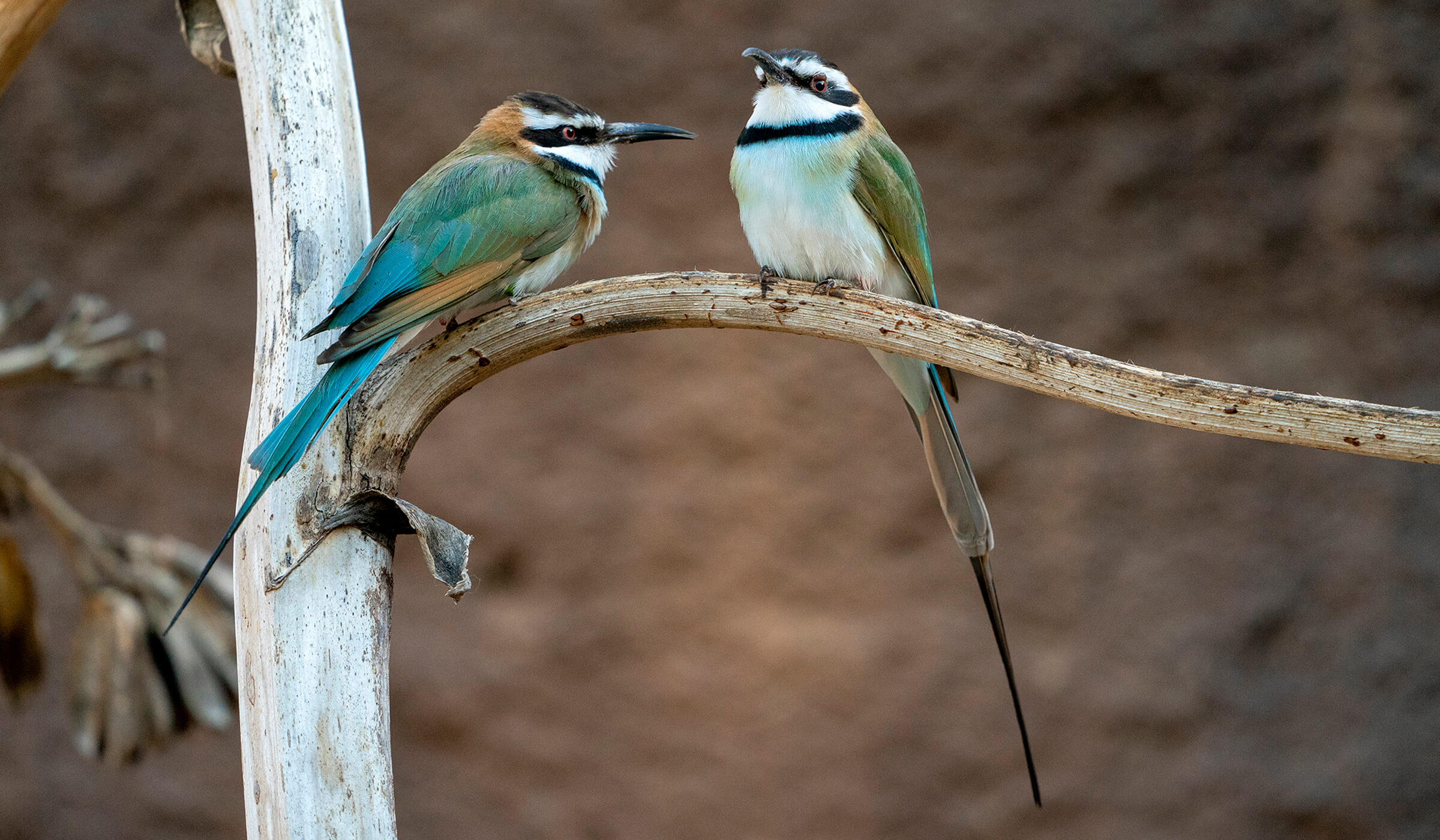
ALL IN THE FAMILY
White-fronted bee-eaters live in colonies made up of extended family groups called clans, which have strong social bonds—unusual for birds. They are cooperative breeders, with up to seven birds (including the parents) helping to incubate eggs and feed chicks at a single tunnel. In most species, helper birds are usually assumed to be juveniles that aren’t yet breeding, but researchers were surprised to learn that in this species, helpers are mature adults that are related to one of the parent birds. Adults that parent one year may assist the next year, and vice versa. In Africa, researchers learned that fewer adults breed—and more take on the role of helper—in years when insects are scarce, and that helpers play a critical role, especially in years with poor prey availability.
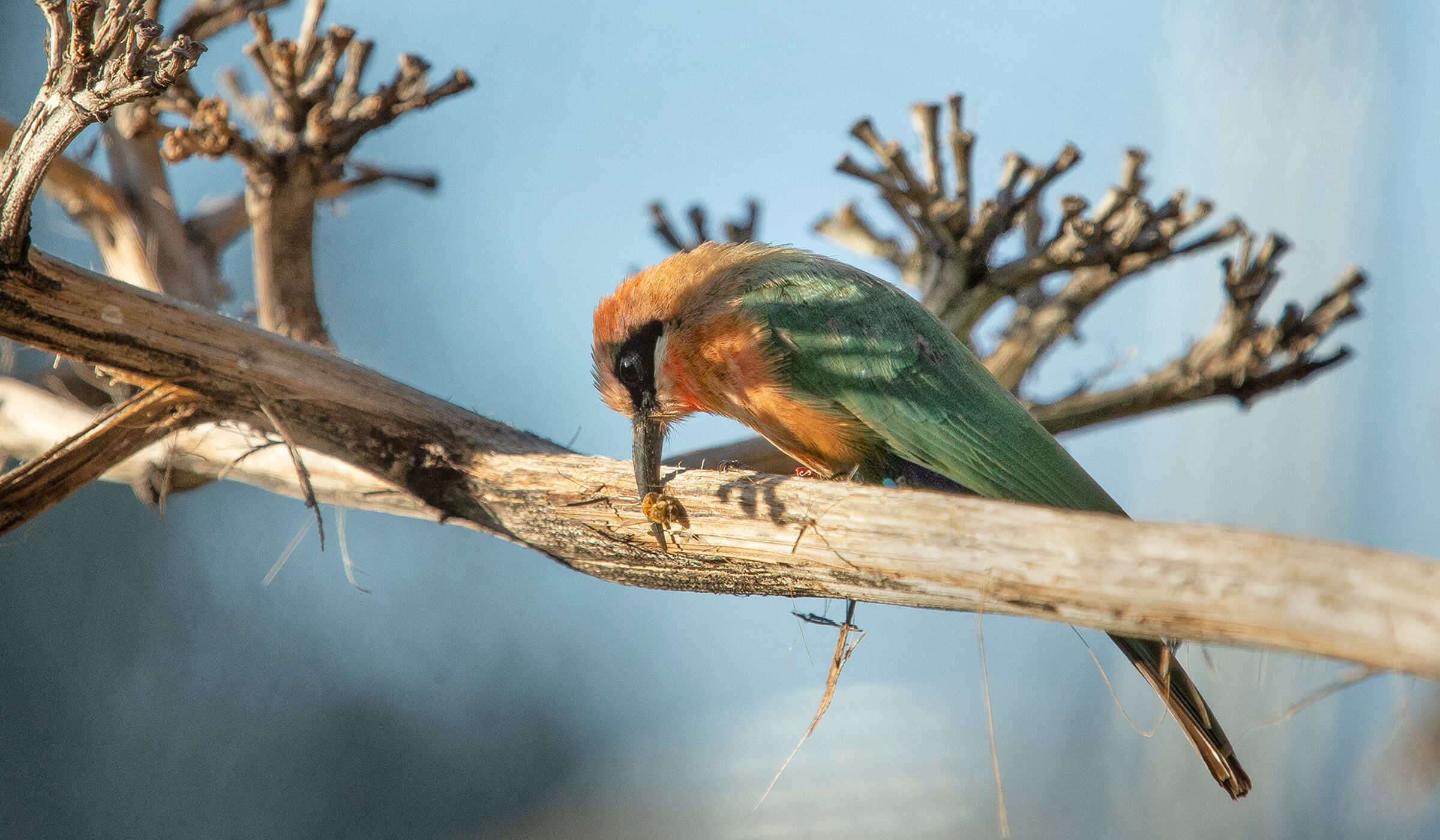
HOW TO EAT A BEE
As their name implies, these birds eat bees, wasps, and hornets, as well as other winged insects, and they catch them in flight. Perched high in a savanna tree, a bee-eater pinpoints flying insect prey with its keen vision. “You see them fly off a perch to catch a bee in midair,” said Dave. “Then, they come right back to the perch,” because it turns out that there’s a bit of preparation that goes into eating a bee. This involves tossing the bee around a bit until it is positioned just right in the bird’s bill.
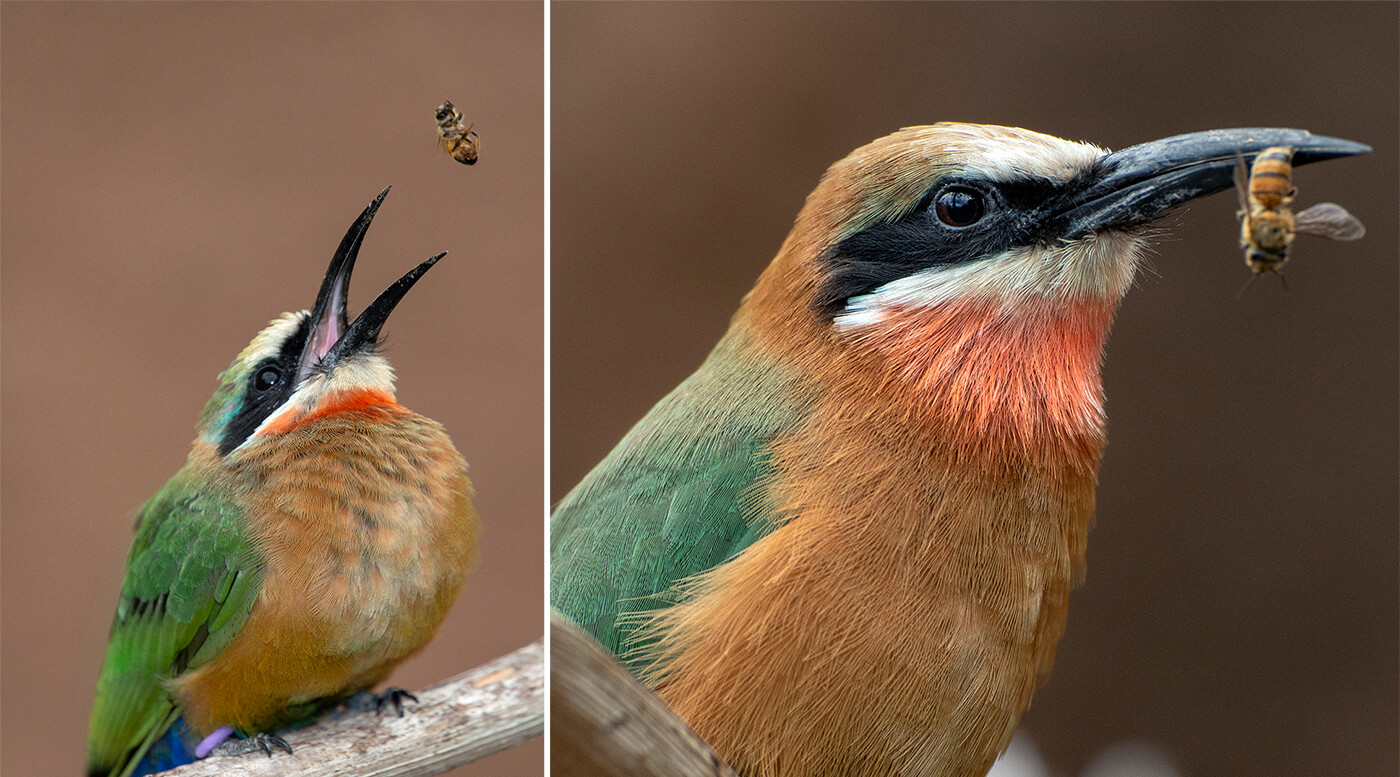
MEAL PREP
A bee-eater must position a bee correctly in its bill before it can kill the bee and remove the stinger.
Next, the bird raps the bee’s head against a branch until it stops moving. Once that’s accomplished, the bee-eater rubs the “business end” of the bee against the branch, removing the stinger and venom sac. With its meal thus prepared, the bird tosses the bee up and swallows it in a single gulp.
Visitors to the Africa Rocks aviary can get an up-close view of the birds’ remarkable hunting prowess. Before construction on the aviary was finished, one potential tunnel was taken over—by bees! In fact, three beehives keep the birds busy. In addition to the one inside the aviary, there are two more just outside the enclosure—one near each end.
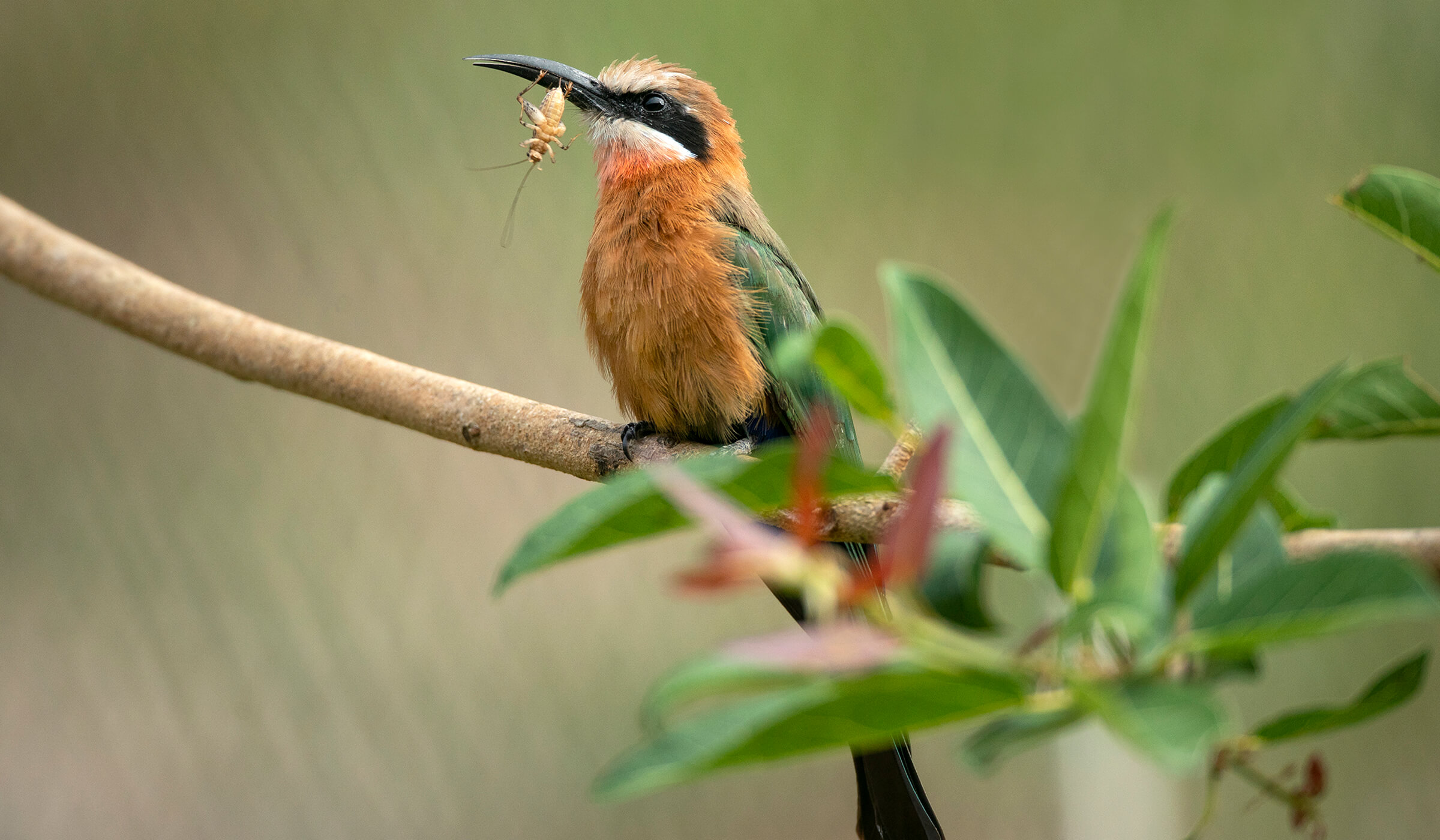
BUG TOSS
Keepers at the Zoo make sure that, in addition to the bees that buzz through their habitat, the bee-eaters get a variety of other nutritious foods, mostly mealworms, waxworms, and crickets. But not just any crickets. “Before we give them to the bee-eaters, we feed the crickets a fortified meal that makes them even more nutritious,” said Dave. Mealworms, waxworms, and a supersized type of mealworm called a “megaworm” are enhanced, too; keepers sprinkle them with a dusting of vitamin powder.
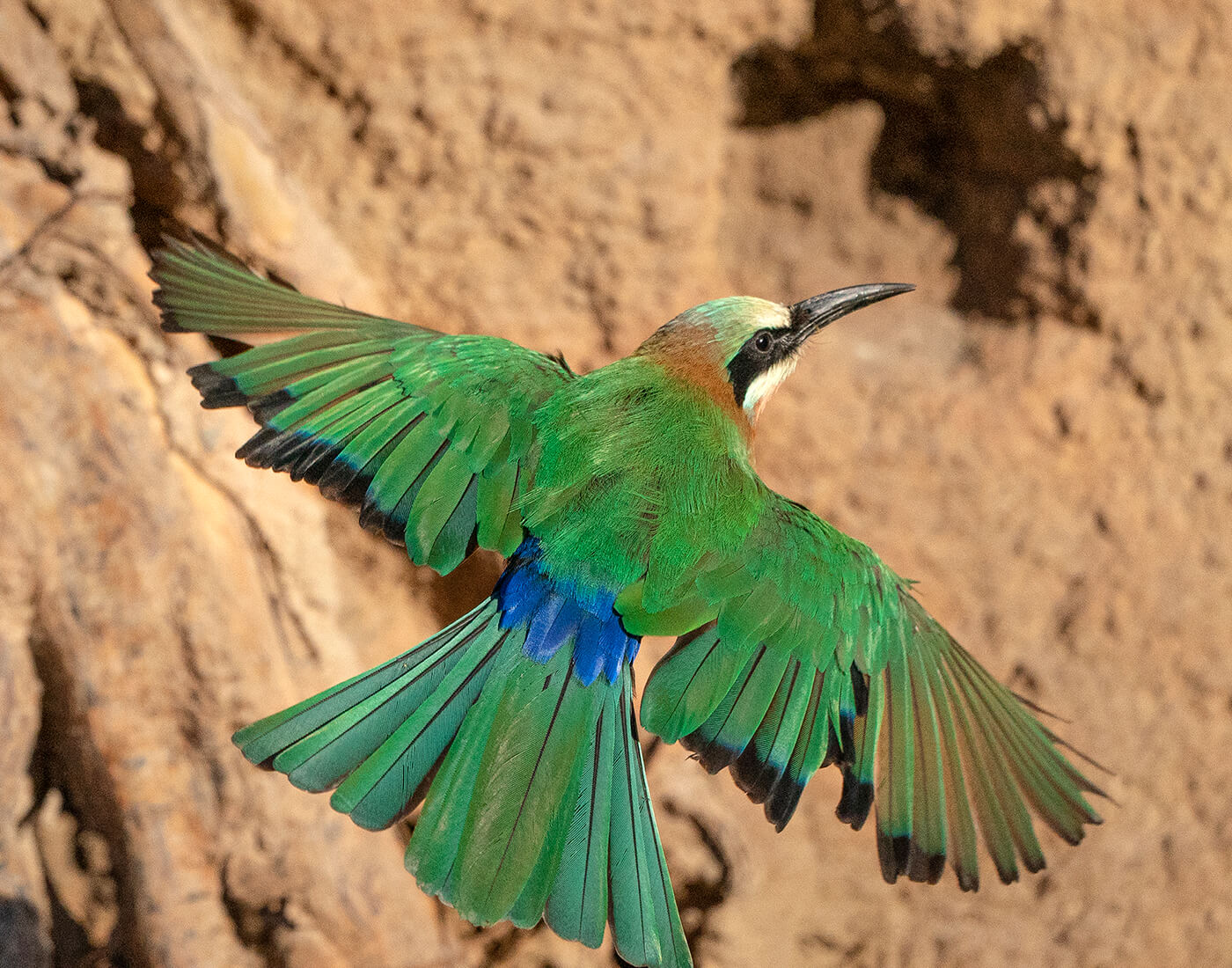
WINGING IT
Bee-eaters catch their prey “on the wing,” in mid-air.
Of course, bee-eaters are adapted to eat prey that’s flying—something worms and crickets don’t do. Hence, the keepers implemented an aviary ritual they call a “bug toss.” To make non-flying prey more enticing, a keeper flings them—one at a time—into the air from the top viewing platform, several times a day. The bee-eaters eagerly snatch them from the air and gobble them up.
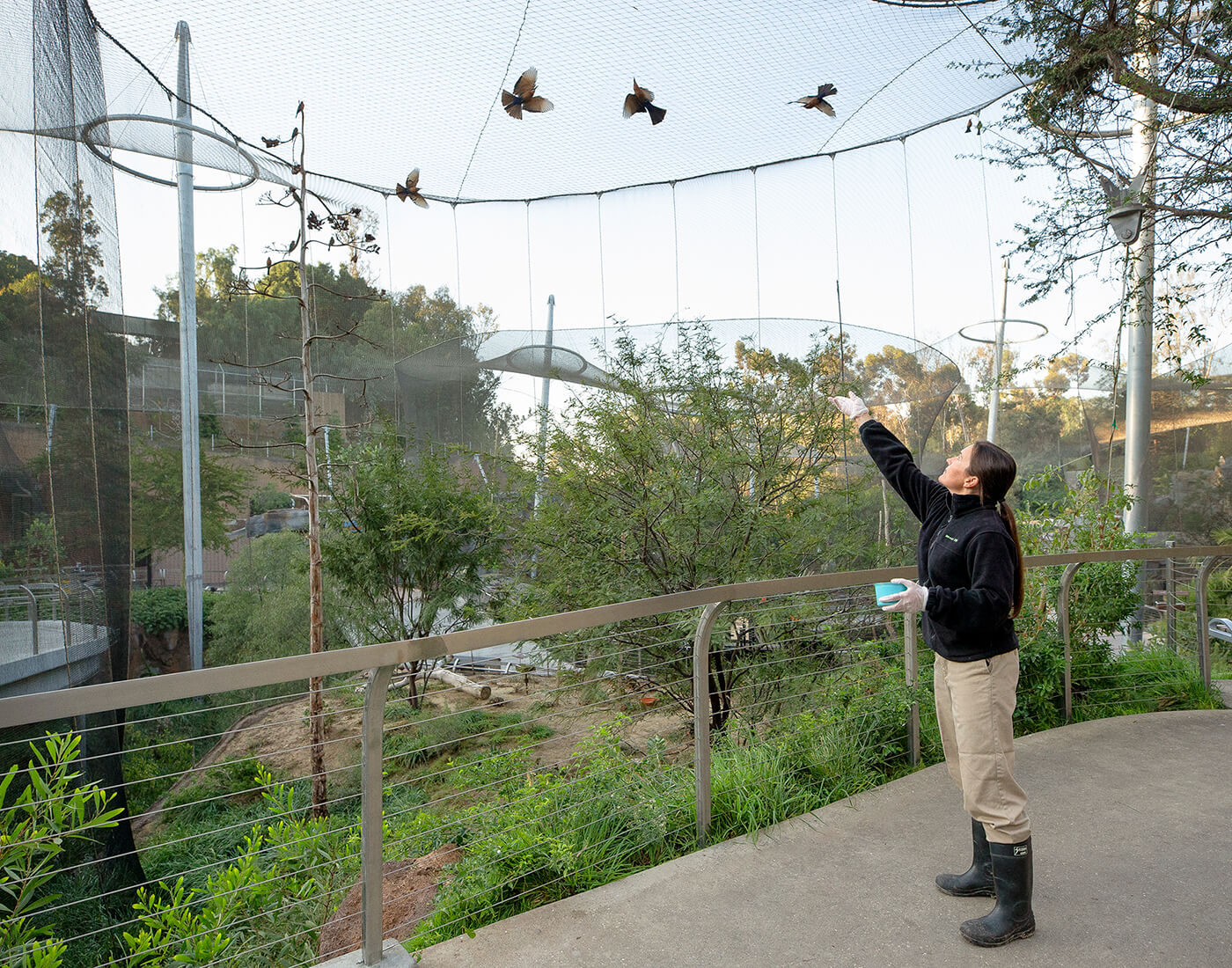
IN-FLIGHT FOOD SERVICE
Bee-eaters are adapted for catching flying insects, so keepers at the Acacia Woodlands aviary in Africa Rocks launch crickets and worms for the birds to snatch.
“Bee-eaters are extremely aerial,” said Dave. “And the larger the exhibit, the more you can appreciate their flying skills.” At the same time, he said, “the larger the aviary, the more complicated things can be.” Not that he’s complaining. Even as he acknowledges the challenges, he admits that he’s pleased with new aviary, where there’s plenty of action in the air. “It is so open, and there are several great vantage points,” he said. “Photographers really like it.” And so do the bee-eaters.

